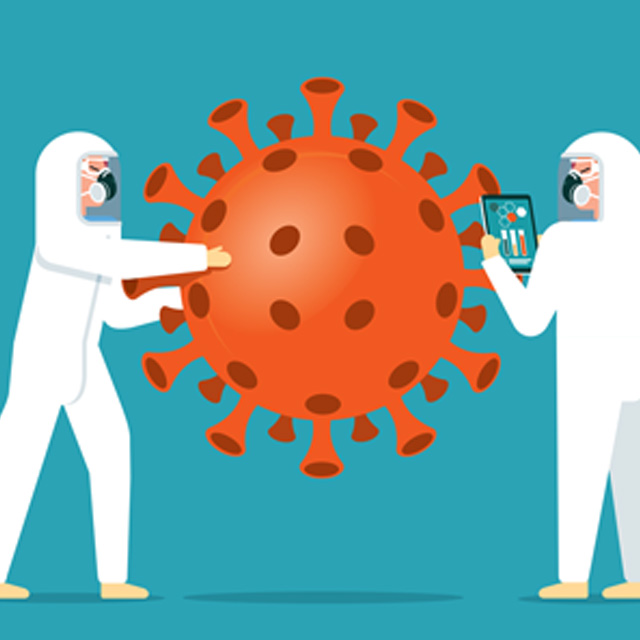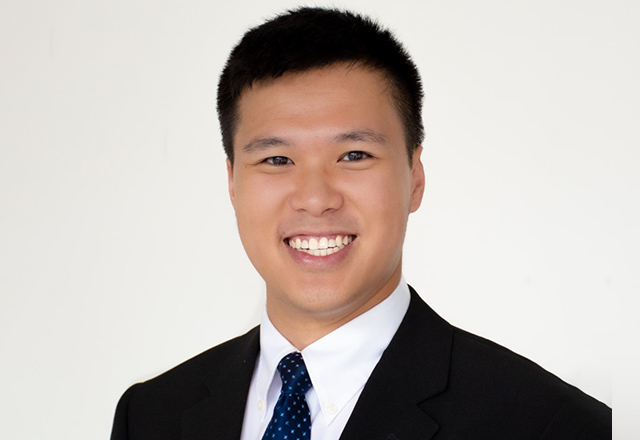(Illustration: Gwenda Kaczor)
When patients with COVID-19 began filling beds at Johns Hopkins Bayview Medical Center in mid-March, third-year internal medicine resident Madeline Rodriguez and her fellow residents embarked on a new educational experience.
While still being taught by faculty, they became the teachers of seasoned professors who had been redeployed from geriatrics and general internal medicine to care for acutely ill patients.
The trainees led an hourlong virtual discussion to explain to their higher-ups how to admit patients to the COVID-19 unit, how to wear personal protective equipment and what to do if they were exposed to the novel coronavirus. They followed up with real-time training and resources.
“We’ve started to break down the hierarchical learning structure that medical educators and trainees have wrestled with for decades,” Rodriguez wrote in June on the CLOSLER website, created by the Miller Coulson Academy of Clinical Excellence.
Johns Hopkins has about 4,000 medical and graduate students, residents, clinical fellows and postdoctoral research fellows. For each of them, COVID-19 and a renewed focus on racial injustice and disparities is creating an academic year for the history books, one with challenges galore but opportunities as well.
Many medical and graduate students are taking at least some of their classes online to protect themselves and faculty from possible exposure to the novel coronavirus. When learning in person or working in labs, they wear personal protective gear and maintain smaller groups than in the past.
Clinical rotations are shorter: six weeks instead of eight for medicine, pediatrics, surgery and women’s health, and three weeks instead of four for neurology, psychiatry and emergency medicine. And when the trainees do go on rounds, often only one student, one intern and one resident enter a patient’s room at a time, about half the number of pre-COVID times.
“I worry that people will be less inclined to spend time at the bedside,” says Rodriguez. “That time is hard to replace. It’s where medical students meet real patients and hear real stories.” On the plus side, she says, smaller groups give each learner more opportunity to ask questions.
Research-focused graduate students and postdoctoral fellows, meanwhile, are trying to make up the time they lost when all but essential Johns Hopkins labs closed for three months starting in mid-March.
But physical distancing requirements mean many are working in shifts. And Johns Hopkins labs are still waiting for 13 doctoral candidates and about 60 postdoctoral research fellows from other countries, not yet able to enter the United States because of COVID-19 and changing travel rules.
A New Learning Environment
In this new academic year, medical and graduate students are experiencing many of their classes and lectures through a computer screen.
“We’re trying to be creative about leveraging virtual technology to ensure people are getting exposure to the experiences, even if it’s not in person,” says Nicole Shilkofski, associate professor and vice chair of education in the Department of Pediatrics.
There's no substitute for dissecting a human cadaver, however. Though gross anatomy lectures are online, dissections are still in person, with eight students at four tables, instead of 18 students at six tables.
COVID-19 has accelerated the existing trend toward online learning, says Nancy Hueppchen, associate professor of gynecology and obstetrics and associate dean of undergraduate medical education. For the past decade, she says, attendance has not been required for lectures, though it is for small groups, labs, clinical correlations with real patients and other settings that call for student participation.
“Only about 25% of medical students ever come to the lectures, and they’re all recorded so students can watch at their own time and pace,” she says.
Over the summer, faculty members and support staff updated their materials to better reflect the realities of online learning. Lectures were updated and shortened, when appropriate, and materials were added for independent study.
Peter Espenshade, associate dean for graduate biomedical education, says the school of medicine recently welcomed a class of 40 master’s degree students and 160 doctoral candidates. The new students will take classes online, but will rotate through labs in person, as graduate students have done in the past. Only one doctoral program opted to postpone the rotations until January, he says.
In the spring, when in-person learning was suspended for clinical students, 30 new online electives were created to continue their education, on topics including telehealth, critical care, biomedical ethics and, of course, COVID-19.
Information about the novel coronavirus seems to change by the minute, says Shilkofski. “We’re teaching medical students in real time,” she says. “I’ve been fascinated to see how COVID-19 has united us as an academic and medical community across the world. It’s been one of the more heartening things I’ve taken out of all this.”
Lab Redeployments and Slowdowns
In mid-March, Johns Hopkins announced that only essential labs — mostly ones studying COVID-19 — would stay in operation. Graduate students and postdoctoral research fellows had to find other ways to continue their work. Some caught up on grant-writing, or took the time to analyze data and draft manuscripts. Others switched to COVID-19 research.
When the labs reopened, the JH Prodensity mobile app, created by the Johns Hopkins Technology Innovation Center, helped researchers track and limit how many people were in the space at a given time, says Espenshade.
Internal surveys show that doctoral candidates were “incredibly eager” to be back in the labs, he says, with most also saying the restart has gone well. But they worry about their futures. “Many of our students go on to become postdocs,” he says. “But if labs across the country remain at reduced capacity, will they take on new people?”
When her lab closed for in-person activity, postdoctoral fellow Aline Gottlieb, co-president of the Johns Hopkins Postdoctoral Association, used the time to read relevant papers for her research on non-alcohol-related liver disease. She’s now back in the lab, but only for a few hours each day, as the 12-person research team works in shifts.
Gottlieb, who is from Germany, is applying for an extension to her two-year visa so she can finish her project. About 70% of postdoctoral research fellows are from countries outside the United States, and many who were supposed to arrive and start work over the summer are stranded in their home countries, hoping to arrive in autumn.
And researchers who are here in Baltimore are unable to go on vacation or visit family in other countries. Gottlieb says she knows one student who traveled to India in January to see family and wasn’t able to return until August.
“My heart goes out to these postdocs who are overseas and just trying to get here,” says Dana Boatman Reich, professor of neurology and otolaryngology and associate dean for postdoctoral affairs. “These delays of three, four or five months are affecting their careers, and are slowing down research progress. The faculty are just as stressed because they’re losing time for their research.”
Still, says Gottlieb, there’s been a positive side to the work and social restrictions imposed by the pandemic: She’s enjoyed spending more time with her husband.
Roy Ziegelstein, vice dean for education for the Johns Hopkins University School of Medicine, sees a silver lining as well.
“I’m not trying to say COVID-19 is a welcome change, believe me. But I will say it has been a tremendous catalyst for change in medical and biomedical education. Change that has been happening gradually and over decades now happens at what I call COVID speed. And that COVID speed is not all negative. Our faculty and our students have really responded in an unbelievable way.”


